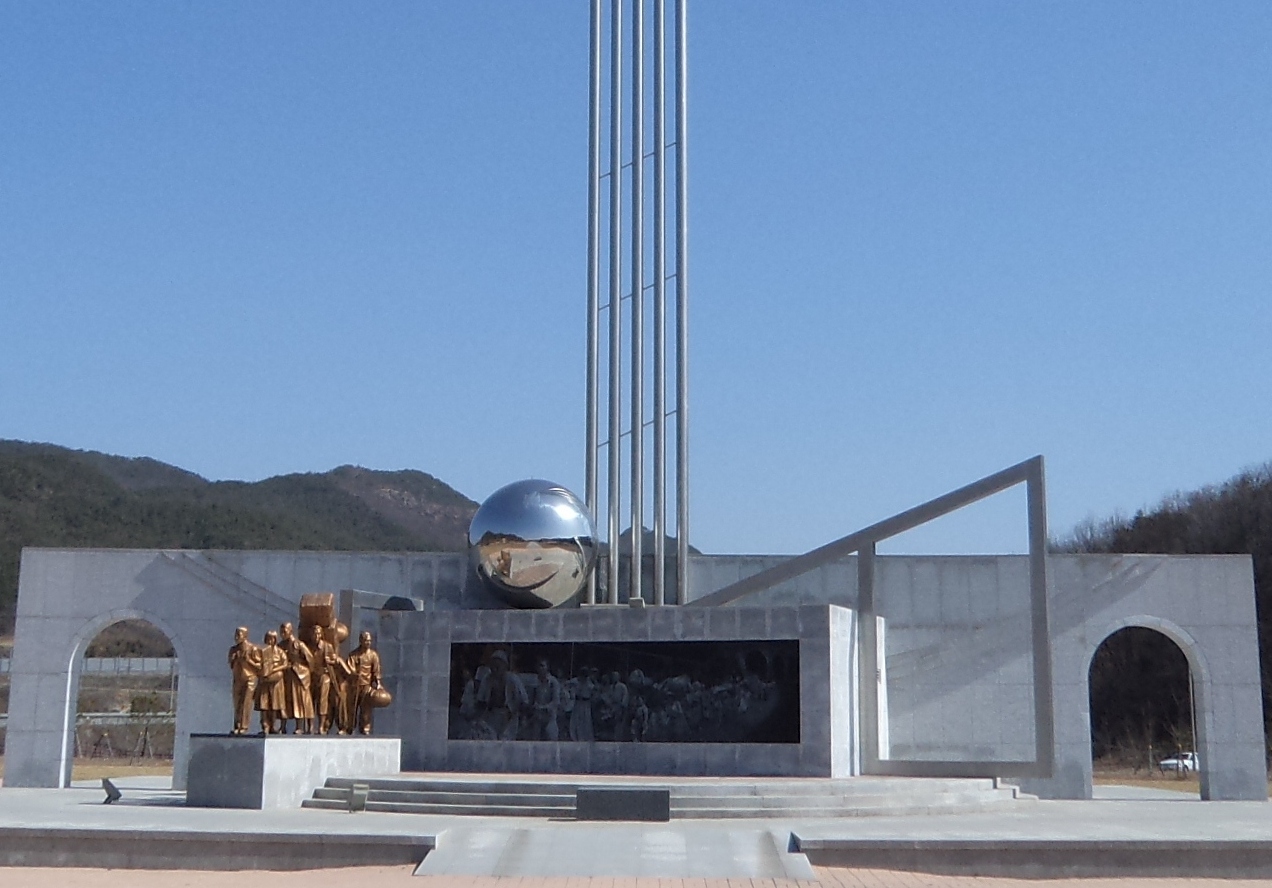Nogeun-ri on:
[Wikipedia]
[Google]
[Amazon]
Nogeun-ri, also No Gun Ri, is a
No Gun Ri: Clinton's Statement
, January 11, 2001. A South Korean government committee in 2005 certified the names of 163 dead and missing and 55 wounded, and said many other victims' names were never reported. The South Korean government-funded No Gun Ri Peace Foundation, which operates a memorial park at the massacre site, estimated in 2011 that 250–300 were killed, mostly women and children. Korean records show Nogeun-ri as a very old village, its earliest mention coming in 11th-century sources. Gazetteers say the village was laid waste during the 16th-century invasions of Japanese shogun
Korean records show Nogeun-ri as a very old village, its earliest mention coming in 11th-century sources. Gazetteers say the village was laid waste during the 16th-century invasions of Japanese shogun 
The No Gun Ri Peace Park
Geography of North Chungcheong Province Villages in South Korea Yeongdong County {{SouthKorea-geo-stub
village
A village is a clustered human settlement or community, larger than a hamlet but smaller than a town (although the word is often used to describe both hamlets and smaller towns), with a population typically ranging from a few hundred to ...
in Hwanggan- myeon, Yeongdong County
Yeongdong County is a county in North Chungcheong Province, South Korea. The county should not be confused with the similarly named Yeongdong region.
During the Korean War, this county was the site of the No Gun Ri Massacre.
Climate
Yeongdong h ...
, North Chungcheong Province
North Chungcheong Province ( ko, 충청북도, ''Chungcheongbuk-do''), also known as Chungbuk, is a province of South Korea. North Chungcheong has a population of 1,578,934 (2014) and has a geographic area of located in the Hoseo region in the s ...
in central South Korea
South Korea, officially the Republic of Korea (ROK), is a country in East Asia, constituting the southern part of the Korea, Korean Peninsula and sharing a Korean Demilitarized Zone, land border with North Korea. Its western border is formed ...
. The village was the closest named place to the site of the No Gun Ri Massacre
The No Gun Ri massacre () occurred on July 26–29, 1950, early in the Korean War, when an undetermined number of South Korean refugees were killed in a U.S. air attack and by small- and heavy-weapons fire of the American 7th Cavalry Regiment a ...
(July 26–29, 1950) during the Korean War
, date = {{Ubl, 25 June 1950 – 27 July 1953 (''de facto'')({{Age in years, months, weeks and days, month1=6, day1=25, year1=1950, month2=7, day2=27, year2=1953), 25 June 1950 – present (''de jure'')({{Age in years, months, weeks a ...
, in which the U.S. military killed South Korean civilians fleeing their nearby villages.Clinton, Bill,No Gun Ri: Clinton's Statement
, January 11, 2001. A South Korean government committee in 2005 certified the names of 163 dead and missing and 55 wounded, and said many other victims' names were never reported. The South Korean government-funded No Gun Ri Peace Foundation, which operates a memorial park at the massacre site, estimated in 2011 that 250–300 were killed, mostly women and children.
 Korean records show Nogeun-ri as a very old village, its earliest mention coming in 11th-century sources. Gazetteers say the village was laid waste during the 16th-century invasions of Japanese shogun
Korean records show Nogeun-ri as a very old village, its earliest mention coming in 11th-century sources. Gazetteers say the village was laid waste during the 16th-century invasions of Japanese shogun Hideyoshi
, otherwise known as and , was a Japanese samurai and ''daimyō'' (feudal lord) of the late Sengoku period regarded as the second "Great Unifier" of Japan.Richard Holmes, The World Atlas of Warfare: Military Innovations that Changed the Cour ...
. At the time of the Korean War massacre, it was in a typical Korean rice-growing area, but many fields were converted to vineyards in later years.
An act of the National Assembly in 2004 called for building the memorial park at the massacre site, which had begun attracting 20,000 to 30,000 visitors a year. The 33-acre (13-ha.) No Gun Ri Memorial Peace Park, built with $17 million in government funds and featuring a memorial, museum and peace education center, opened in October 2011. In 2009, Yeongdong County established a nearby cemetery to which some victims' remains were moved from family plots. The 8th International Conference for Museums of Peace was held at the park in September 2014.
References
Further reading
* *" * Ministry of Defense, Republic of Korea. ''The Report of the Findings on the No Gun Ri Incident''. Seoul, South Korea. January 2001.External links
The No Gun Ri Peace Park
Geography of North Chungcheong Province Villages in South Korea Yeongdong County {{SouthKorea-geo-stub